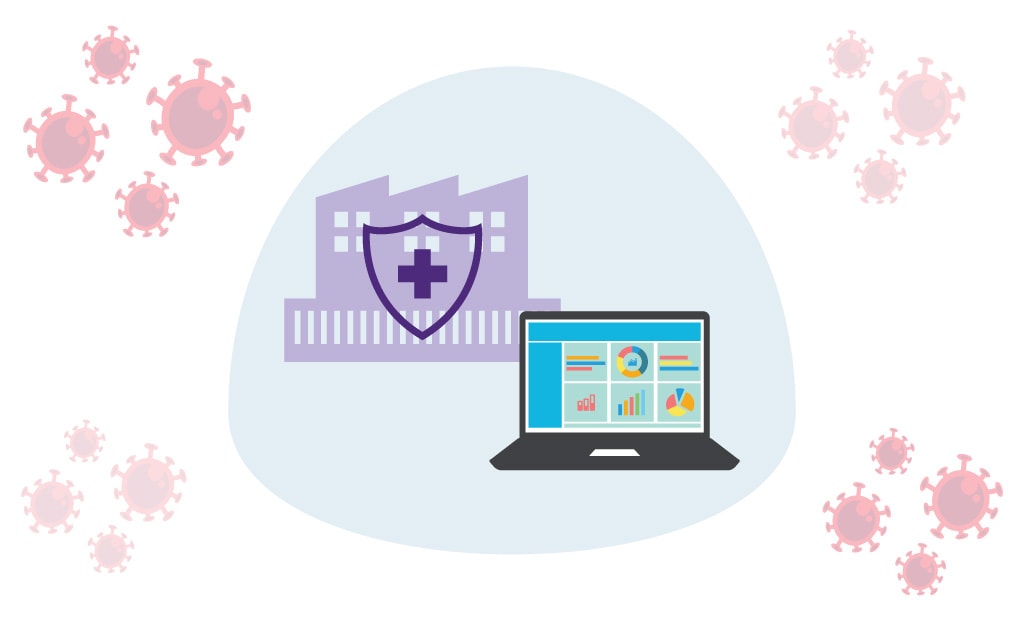We all rang the new year with a hope that Covid-19 will become a thing of the past but the world saw another wave with the Omicron variant. Along with it, the challenges of medical manufacturers increased even more. In our previous blog, we gave a detailed outline of the challenges that medical manufacturers will continue to face in 2022.
These issues will be resolved only if manufacturers start automating their workflows and business processes with powerful ERP software. This will ensure uninterrupted production, faster goods movement, better compliance, and on-time delivery.
Let us look at how an ERP will help medical manufacturers to face the challenges one by one.
Demand Forecast
The pandemic caused a huge demand and supply gap in the market, where the supply was less and demand was much more. Considering the repeated waves, medical products are still required to be manufactured at a faster rate to cater to frontline medical workers, doctors, patients, and the general public.
An ERP’s centralized database stores all data entries and updates done on it. From order inquiries to sales conversions, it stores every bit of information that is recorded in the ERP. Manufacturers can use this treasure trove of data by analyzing lead sources, sales trends, RFQs, time-to-quote, and total conversions. The past data along with existing orders and current market demand can help them arrive at accurate sales forecasts. This will help them to predict the estimated number of products to be manufactured, the required capacity, and manpower.
Resource Utilization
Most medical manufacturers faced a huge shortage of skilled labor as the pandemic had affected people in terms of livelihood, physical and mental health. Vaccine policies and strict preventive measures led to resignations and lay-offs. This also affected the overall output and productivity.
Manufacturers can manage their existing resources very well with ERP software. With an ERP’s labor-management feature, manufacturers can easily track employee productivity starting from login and logouts to work-center wise yield. They can analyze overall employee utilization and use that data to manage workloads better.
Real-time shop floor visibility means manufacturers can get a comprehensive view of machines that are idle, working, or under break-down. Using this, they can divert work-loads to personnel and ensure maximum utilization.
Supply Chain Management
While the fragile global supply chain is still recovering from repeated waves coupled with geopolitical tensions across the globe, manufacturers are finding it hard to procure materials from their preferred suppliers. To counter this, they had to tap local suppliers to procure materials that they needed. While identifying local suppliers and forming relationships with them is one part of the problem, the second part is how to procure materials at the earliest and prevent stock-outs and production delays.
An ERP software’s Supply Chain module provides real-time visibility into supplier performance data such as time-to-supply, product quality, credit history, pending and previous orders. Medical manufacturers can prevent stock-outs by enabling just-in-time purchases from their nearest available supplier. RFQs and POs can be quickly generated and shared with suppliers.
Suppliers can be provided access to demand and inventory levels through self-access portals. In case of a requirement, they can raise sales orders from their end and dispatch the goods. Supply chain visibility is improved with advanced product traceability right from its procurement till it goes into the final product.
Inventory and Warehouse Management
With an ERP’s Inventory management module, medical manufacturers can solve a lot of problems related to product traceability, inventory stockouts, storage, and related costs.
They can completely automate data collection during goods receiving by recording incoming materials with bar-codes or RFID tags and instantly storing them within the ERP. These goods can be tracked at every production phase from procurement to the finished product.
Storage and movement issues can be easily sorted out with warehouse management capabilities. Manufacturers can create and maintain a master inventory list that includes end-to-end product details.
As mentioned previously, an ERP helps maintain the right inventory level at all times. If the stock goes below the threshold, the ERP sends automated alerts to initiate a PO with the preferred supplier who can deliver the goods on time. This prevents stockouts, subsequent production interruptions, and delivery delays.
Quality & Compliance Management
Medical manufacturers can effectively adhere to strict FDA requirements, TS13485, and ISO 9001 standards from product planning to delivery with an ERP. With automation of key quality parameters, manufacturers can track quality measurements at each production phase, detect anomalies and prevent compliance issues.
They can be ever-ready for quality audits by maintaining a comprehensive audit trail of manufacturing activities. They can track employee certifications and maintain robust document and revision control to meet 21 CFR 11 requirements.
Cost Control
Medical manufacturers can control overall costs to improve their bottom-line and profit levels. With ERP software, they can create and configure cost types for cost categories such as materials, overheads, labor, maintenance, etc. Using standard and actual costing methods, they can accurately arrive at costs taken to manufacture each product.
Conclusion
History tells us that events similar to the Covid-19 pandemic will keep impacting humans in the future as well. Therefore, medical manufacturers should be ready for any eventuality. They should become more proactive by adopting technology that will automate their workflows and help them manufacture quickly.
OmegaCube ERP has comprehensive capabilities that cater to the medical manufacturing industry. Contact us for an in-depth demo!






